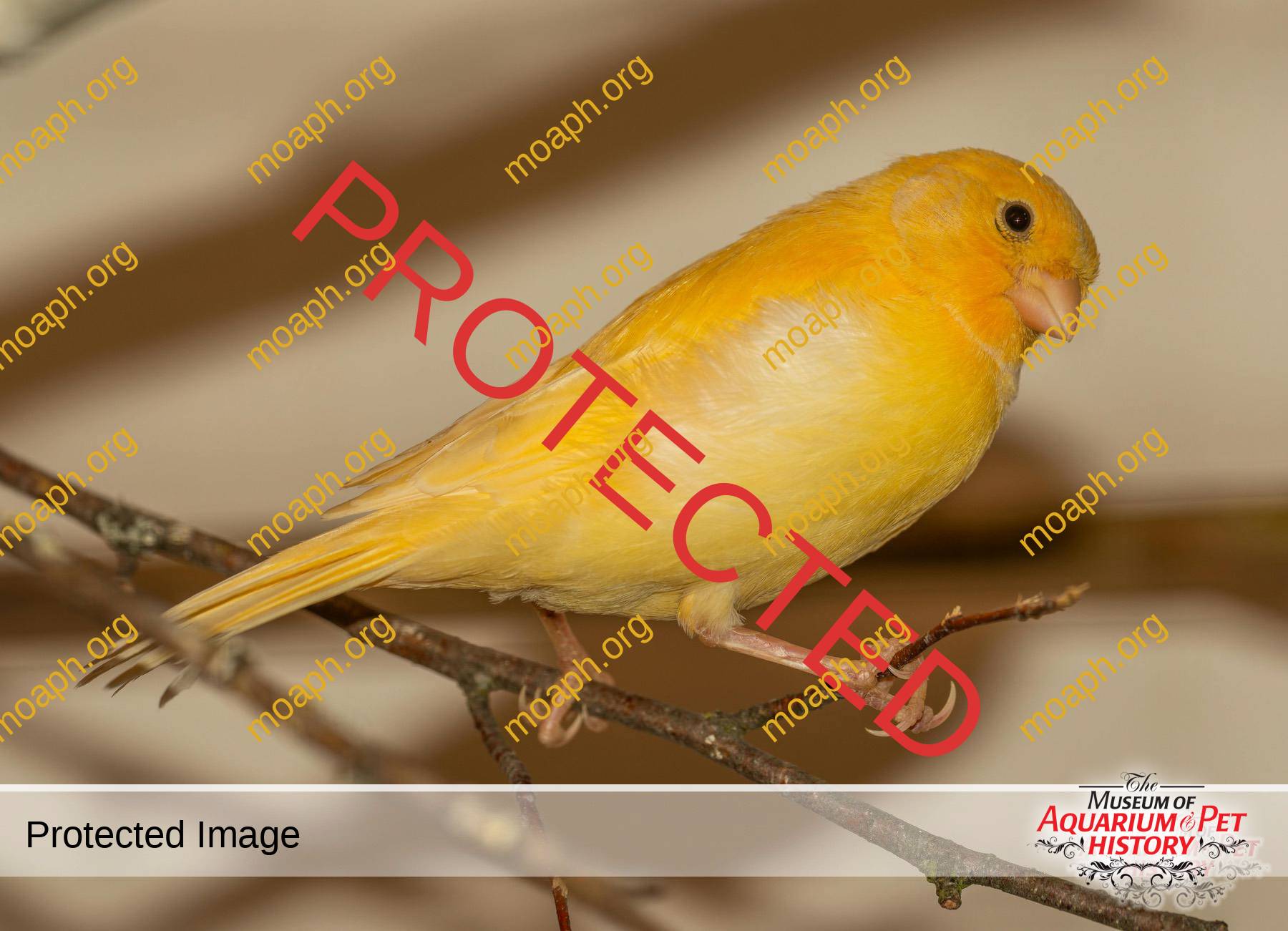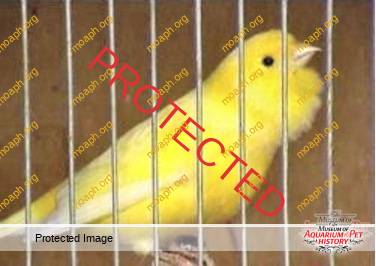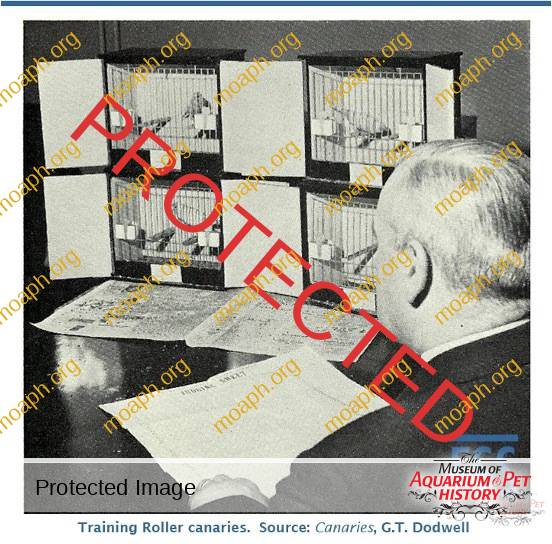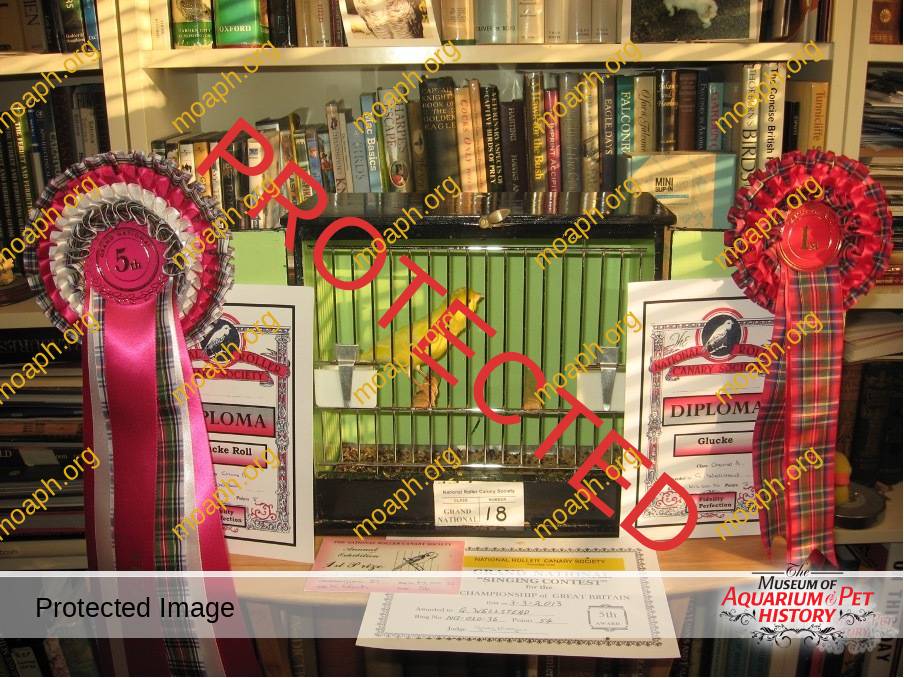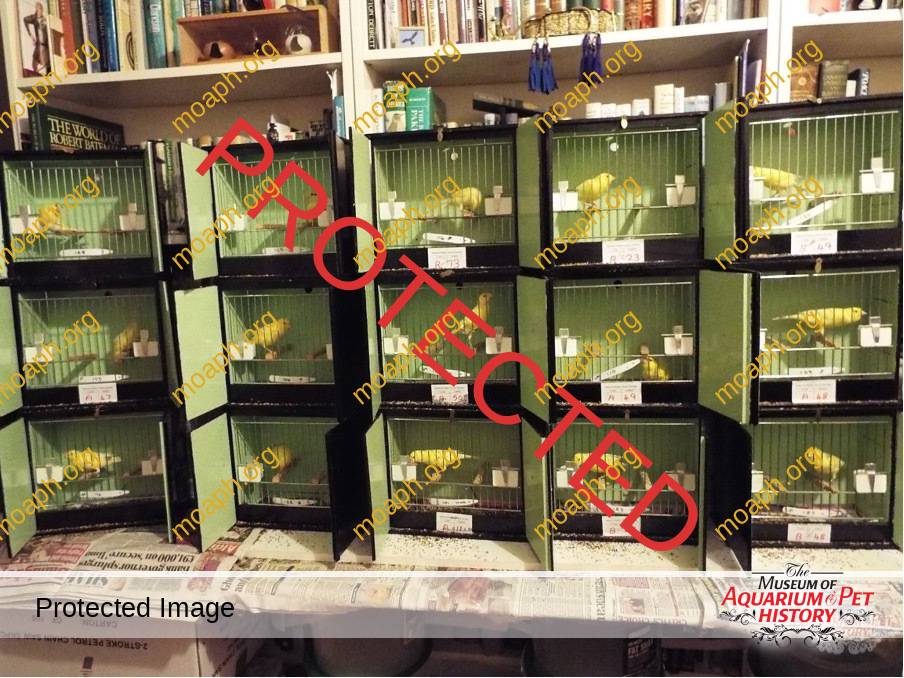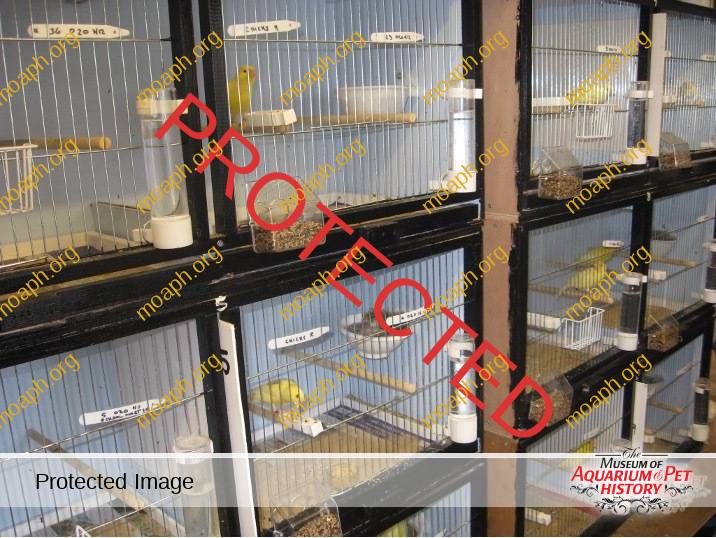The Roller Canary
In a previous article I wrote abut my grandfather’s involvement with the trapping of wild birds, his other involvement with birds centred around the breeding of roller canaries. We lived in the north of England in an area dominated by industry, in particular cotton manufacturing. The fuel for powering the mills came from steam to produce which required coal. So, coal mines were dug and when you have coal mines, you have a demand for singing canaries.
There are currently three major types of singing canary in Europe, the Timbrano which originated in Spain, the Waterslager from Belgium and the Netherlands, and the oldest of all the Roller canary which originated in the Hartz (Harz)Mountains of Germany.
The breeding of this canary, which is a domesticated form of the wild canary has its origins deep in European history, but the selective breeding for song, made the Roller a canary with a special place in the history of this bird. The German breeders of the roller soon realised its potential and profited from breeding and exporting the bird in large numbers.
This singing canary is in many ways far removed from the wild bird. Once or twice a year I visit the island of Madeira and if this is during the spring and summer months, I am guaranteed to hear wild canaries singing. It is a song that I can hear in my own birdroom, for it is the song sung by many of the ‘type’ canaries bred today. By ‘type’, I refer to a bird that is bred for a particular form or shape rather than for its song. There are also canaries bred for their colour alone and although these birds are now much larger than the wild canary as with many of the type canaries, when they were first introduced (based on crosses with the red hooded siskin), they were diminutive birds bred from roller canary stock. The one distinguishing factor to help identify a true roller canary is that a roller will always sing with its beak virtually closed. No other canary is known to sing in this fashion. It is believed that this trait has been instilled in the roller canary through selective breeding of such birds. Singing in this manner has produced a song that is much softer and more subdued than that of the ordinary canary that can include some harsh notes in its repertoire.
This all begs a number of questions: Why is the bird known as a ‘roller’? Why was the song considered to be an important element in selling the bird?
To answer the first of these questions, I need to give an explanation of the complexity of the birds’ song. Modern technology has taught us that the song of many birds is much more complex than we realised; that the human ear alone is incapable of identifying all the different elements of common and garden songbirds. But with the roller canary, such was the emphasis on the song that people learnt to distinguish different elements rather as a musician would recognise different notes and tonal qualities in music. It was said that the song of this type of canary ‘rolled’ from one musical element or ‘tour’ to another. Each part of the song of the bird was identifiable, but more on this later.
To begin with, the song was important because these birds were to be sold into the pet market, where people would keep possibly a single bird to provide some form of entertainment. A loud songster with harsh notes would not have been welcome in an Edwardian drawing room, but the soft notes and trills of the roller canary were well suited to the austere atmosphere. However, there soon developed another market for this small bird. Rather than selling to the middle classes, the working man provided a market, though for quite a different reason.
Competitiveness appears to be an innate drive in the human being and this manifests itself in all manner of ways. With type canaries, as different forms developed, they would be shown competitively against each other the winner being closest to a ‘standard’ set by the controlling authority. As roller canaries were bred not for their form or colour, the competition was based on their song. Although, this form of competition has lost popularity in the UK especially compared with the other forms of canary competition, singing competitions still do exist.
So, how is it possible to distinguish between the song of one bird and another? First of all, you require someone with a trained ear, and the judges will have many years experience of assessing the birds.
There are two basic types of competition: One compares individual birds against one another, whilst alternatively, teams of four birds meet in competition.
A single bird competition requires the entered bird to be presented in a special competition boxed cage with front opening doors to allow the birds to be exposed to the light. They will not tend to sing in the dark and so when a judge opens the doors, a bird will usually sing. One means of stimulating the bird to sing is to shake a box containing matches. For some reason the bird often reacts to the sound by singing. In nature the birds will sing to establish a territory and to entice a mate to enter and stay in its territory, so perhaps the sound of shaken matches convinces the bird that it has a rival nearby.
The judge will listen to each bird individually and score its song according to the range of tours or rolls and the quality of those notes. There are special terms to distinguish different elements to the canary song, these mainly are described as: hollow roll, bass roll, gluck roll, bell roll, water roll, hollow bell, schockle and bell tour. In addition to these, you have flutes. It requires a very well trained ear to differentiate between these notes for, in many instances, the variations are slight. A bird can be placed before a judge for as long as thirty minutes to allow it to sing its full repertoire. With the possibility of sixty birds in a class, this can mean many hours of judging. In some instances, a bird fails to sing at all, and so receives no points. This is often seen to suggest that a bird has not had the necessary training. Otherwise, points are allocated according to how many of the various elements of the song a bird emits and the quality of each element. So, points are amassed according to both quality and the range of the singing bird.
Where teams of four birds are involved, there is usually more than one judge assessing them. They will however be scored on the same basis as for an individual bird. The cages for team contests are usually all wire affairs, and a screen is set around the birds during judging to separate them from the rest of the competition. The important element to a team is that they all sing in the same key!
As I have referred to earlier, much of the song of the roller canary is inbred and there is some research suggesting that the song cannot be taught, although it is well known that young canaries will imitate other birds and so it is essential that non-roller canaries are kept well away from the breeding room set aside for rollers. Many fanciers will also utilise ‘tutor’ birds, that is good quality rollers which will sing for the young to imitate. In some instances fanciers, looking to improve the song of their young birds will play recordings of winning canaries.
Other training involves accustoming the birds to the competition cages and the competition itself and this will begin from the age of two or three months. Training cages, which are similar to competition cages but without the solid front doors, are often utilised, and birds within them will be carried around for them to become steady when moved to a competition venue. This process can happen two or three times a day and introducing the birds to unfamiliar people can be a part of the process. The competition conditions can also be replicated by placing a bird in a competition cage and after a while, opening the doors to allow in light to persuade the bird to sing. It should be noted that the competition cages have two small holes in them to allow for a subdued light enabling the birds to access food and drink.
In the UK, many of the clubs that once existed have disappeared and there are relatively few competitions now held with much fewer entries than was once the case. Once a competition would have seen entries of up to four hundred birds, but now it is more likely to be a tenth of that number. The competitions are not normally attended by the general public, largely because there is nothing to see, as most of the birds, for most of the time, are caged in completely enclosed boxes. However, the competitions are very important social occasions for the competitors some of whom will have travelled long distances to attend.
The breeding of and competing with roller canaries is a world wide affair and appears still to have a healthy following. In the UK, the two main clubs are Wigan and Leeds, both based in the North of England. So the sight of a roller canary, almost crouching across its perch singing with its throat feathers outstretched will remain a feature of bird keeping for many years to come and bring delight to the ears of those fortunate enough to be able to listen.

